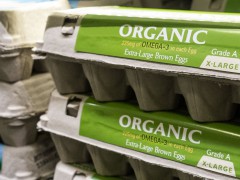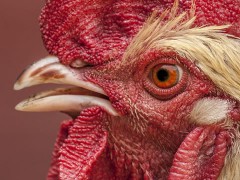In recent food news, CNN writes of groundbreaking innovation that has certainly been turning heads: laboratory-grown meat. Scientists have developed technology capable of creating tiny masses of muscle tissue from small amounts of live-animal cells, with the hope these “lumps” could eventually become meat for human consumption.
Whether or not this gets your hunger rolling, lab-meat growers have made a strong case for the product premised upon its advantages over traditional methods of meat-harvesting. First, lab-grown meat avoids the costs and controversies associated with animal slaughter. Producing lab-grown meat is also more sustainable, with much less environmental impact than typical meat production (e.g. less greenhouse-gas emissions, little-to-no land/water requirement, less waste). Food companies endorsing this meat are hoping to make it a “niche” product for “eco-conscious” people who abstain from meat for ethical reasons.
However, a major issue remains of what exactly these food companies will be able to name this type of product.
The federal government has in codified the definitions of some very common food items for marketing and inspection purposes. For example, under 21 U.S.C. § 321, “butter” must be made of milk and/or cream containing at least 80% milk fat. Under 21 U.S.C. § 1033(g), an “egg” is defined as the “shell egg” of the domesticated chicken, turkey, duck, goose, or guinea. These food definitions are generally called “standards of identity”.
The federal definition of meat was codified in 1907 and has remained untouched since. According to the FDA, “meat food product” encompasses “any product . . . which is made wholly or in part from any meat or other portion of the carcass of any cattle, sheep, swine, or goats, excepting products which contain meat or other portions of such carcasses only in a relatively small proportion . . . “ 21 U.S.C. § 601(j).
But what about if I, as a food innovator, want to market a low-fat butter with less than 80% milk fat, or sell pheasant eggs, or create lab-grown meat that started out as a “relatively small proportion” of an animal carcass? FOr example, a plain reading of § 601(j) leaves the impression that lab-grown beef created primarily from a bundle of bovine cells will not fit this definition. All of these innovations would be precluded from using common definitions of foods during marketing.
If it cannot be called “meat”, lab grown meat will have to be marketed using something else. It is not hard to imagine the marketing hurdles this will put in the path of its early entrepreneurs.
Broader food law point: food regulations were not written with innovation in mind. Almost every new food idea inevitably crashes into the established rules of the industry. Legal compliance should be part of any product launch or new food idea.
—By Gabriella Agostinelli. Follow me on Twitter @foodlawgal

















